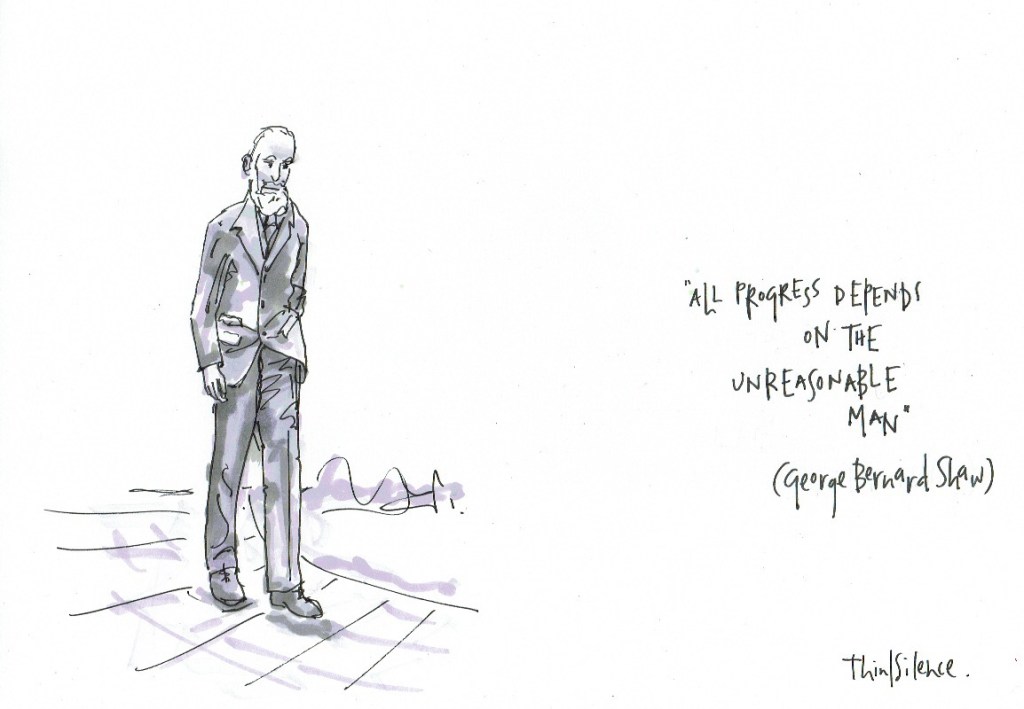
Each of the projects described in this book has at its centre something drawn by hand.*
Quentin Blake
A positive thing that can come from anxiety is that it can be a sign that some things in your life, and in you, are out of alignment and need addressing.**
Kate Sutton
Quentin Blake’s words form the opening sentence
in the third book I’ve picked up from the illustrator
so far this year –
If you’ve ever read one of Roald Dahl’s tales then
you’ll know Blake’s work.
“Something drawn by hand”
feels like a very healthy thing to do,
Proffering a joining of our inside and outside worlds
when the rush and noise of 21st century life
refuses us rest and reflection.
I’d also picked up a copy of
Kate Sutton’s Drawing on Anxiety, a journal
in which Sutton encourages drawing in a mindful way:
Drawing calls for us to be more present,
it allows the flow state, and to fully focus on the
task at hand, which can be ever so soothing.**
Here are some some of her examples: draw
the things you find yourself doing when
unhappy and anxious, and
the things that make you feel calm, draw
the things you hold tightly on to, and
the things you would do if you weren’t afraid.
Draw nature taking on a city, the
things that help you sleep better, the
things that help you in the morning, draw
your inner critic, and
some things your body has told you.
This assumes that
everyone can draw –
And we can –
It’s just that many of us gave up at
a very early age; Lynda Barry asks:
How old do you have to be
to make a bad drawing?^
How old were you?
We wrongly think that some can draw whilst
most cannot, but
drawing is more about seeing than drawing,
Being present, paying attention, being led into
a larger world.
Don’t draw complicated,
Draw simple (I call it doodling) –
I love Blake’s images because they are uncomplicated, yet
full of life.
Here’re are a couple of things to be playful with:
Take a number of objects out of your cutlery drawer and
draw them as simply as possible;
Search for “images of Quentin Blake” on your browser,
Choose some images you really like and simply copy them.
Now to find some words:
Before writing and drawing were separated
they were conjoined.^
I enjoy illustrating life with doodles and words –
Even taking unhelpful thoughts and feelings, and
doing something different with them, something more, so
here’s a third thing to try:
Re-member an unhelpful thought –
This’ll never work,
You’re rubbish at this,
What a mess you’ve made,
You don’t belong here;
The internal critic is trying to protect us, but
in a really unhelpful way,
So we’re going to provide some help by
inserting a word
(or replacing negative words like “never” and “don’t”) from
the following list:^^
(Self) Awarely
Bravely
Confidently
Determinedly
Energetically
Fearlessly
Gratefully
Helpfully
Imaginatively
Joyfully
Kindly
Limitlessly
Motivationally
Nobly
Perseveringly
Quirkily
Respectfully
Strongly
Thoughtfully
Uniquely
Vibrantly
Worthily
eXeptionally
Youthfully
Zealously.
When we play with our sample thoughts, they become:
This’ll work vibrantly,
You’re fearlessly rubbish at this,
What a thoughtful mess you’ve made,
You bravely belong here.
Create a picture to go with your sentence – perhaps
something a la Blake, and maybe
add a little colour, too.
Notice what happens as you do this, as
you playfully and imaginatively
illustrate your life.
*Quentin Blake’s Beyond the Page;
**Kate Sutton’s Drawing on Anxiety;
^Lynda Barry’s Making Comics;
^^Borrowed from Mourad Diouri’s I am ….


















You must be logged in to post a comment.